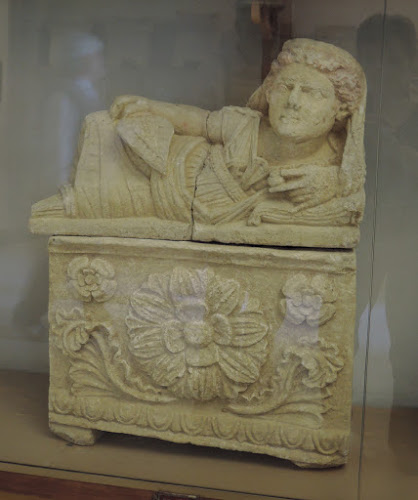We stopped at Volterra on our way to Lucca. More than 2,000 years ago, Volterra was one of the most important Etruscan cities.
Volterra’s most famous sight is its Etruscan arch, built in the fourth century B.C. The newer stones are part of the 13th- century city wall, which incorporated parts of the much older Etruscan wall.
There is also a well- preserved Roman theater built in the first century B.C.
The streets of Volterra look like this.
We spent the remainder of our time in the Etruscan museum. [description below from Rick Steves' Italy guide book]
There is a large collection of Etruscan funerary urns (dating from the seventh to the first century B.C.). Designed to contain the ashes of cremated loved ones, each urn is carved with a unique scene. Etruscan urns have two parts: The casket on the bottom contained the remains (with elaborately carved panels), while the lid was decorated with a sculpture of the departed.
Women and men alike are depicted lounging on Etruscan urns. While they seem to be just hanging out, the lounging dead were actually offering the gods a banquet— in order to gain their favor in the transition to the next life. The banquet— where Etruscans really did lounge like this in front of a table— was the epitome of their social structure. While the finer urns are carved of alabaster, most are made of limestone. Originally they were colorfully painted.
Just a few of the other amazing things ....
The following sculpture is not Etruscan but still really cool!
And a close-up of that last piece - notice the hands.






























No comments:
Post a Comment